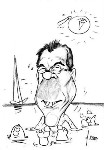MPEG-2 Systems
MPEG-2 Systems is the standard used for digital television broadcast and optical media (DVD and Blu-ray) to transport packets with compressed audio, compressed video, and other digital data. While the audio and video compression standards specify the format of the coded digital data, MPEG-2 systems specifies the format of a single stream carrying the coded audio and video data. MPEG-2 Systems specifies two closely related formats: the program stream format, used for DVD, and the transport stream format, used for digital television and Blu-ray. The MPEG-2 system features include:
- packetization of coded audio and video data;
- requirements for the decoding of audio and video in receivers/players;
- synchronization in receivers of decoded audio and video;
- ensuring a high quality of service.
Regularly, new audio and video coding standards evolve. For example, in 1996, MPEG-2 video was published, in 2004, AVC video, and in 2013, HEVC video. A new coding standard can only be used in digital television, DVD, and Blu-ray after an update of MPEG-2 systems describing how to apply the new coding standard in a MPEG-2 system stream. Hence, to pave the road for next-generation MPEG coding technology in applications, extensions of MPEG-2 systems are regularly defined.
The MPEG-2 systems standard is deployed widely. Over the years (until 2013), in total, more than 4000 million Set-Top Boxes, digital TV sets, DVD players, and Blu-ray players were shipped worldwide, each supporting MPEG-2 systems. Furthermore, it is supported in many mobile devices. In other words, MPEG-2 systems is deployed already for twenty years and most probably will continue to be applied for many more years to come.





